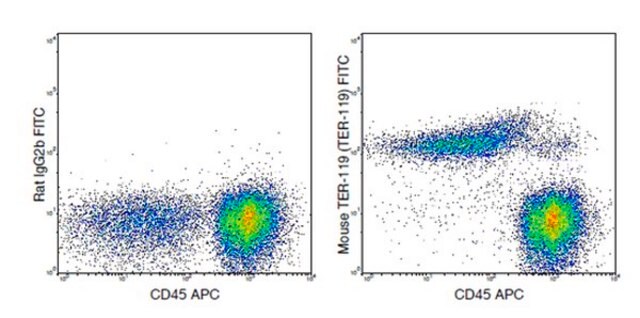General description
Rabbit polyclonal anti Sprouty 2 (N-Terminal) antibody recognizes Sprouty 2 by immunoblotting (doublet at approx 32-35 kDa), immunofluorescence and immunoprecipitation.
Sprouty 2 was first isolated in Drosophila as a negative regulator of receptor tyrosine kinase signaling (RTK). In vertebrates, the family is composed of four members, Sprouty 1, 2, 3 and 4. Human Spry2 encodes 315 amino acids protein, postranslationally modified by palmytoilation, and by phosphorylation of serine and tyrosine residues. When expressed in COS cells, Spry2 is localized to the cytoplasm and co-localized with microtubule proteins. Upon EGF stimulation, it is translocated to membrane ruffles. Sprouty 1 and 2 inhibit FGF- and VEGF-induced endothelial cell proliferation, at least in part, by repressing pathways leading to p42/44 MAP kinase activation. The role of Sprouty 2 in EGF-mediated MAP kinase signaling is less clear. It was recently shown that Spry can function both as a negative and positive regulator of EGFR mediated MAP kinase signaling. Interaction of Spry2 with Cbl (an E3-ubiquitin ligase) interferes with the ability of hSpry2 to inhibit EGF signaling by specifically intercepting c-Cbl mediated effects on receptor down regulation. Phosphorylation of Spry 2 on Tyr55 leads to its association with c-Cbl. This association prevents formation of an EGF receptor-Cbl complex, consequently inhibiting ubiquitination and down regulation of the latter.
Sprouty proteins are ligand-inducible, negative regulators of RTK signaling pathways that modulate cellular growth, differentiation, and movement. Sprouty 2 (Spry2) mediates apoptosis control by c-Cbl sequestration and growth factor receptor signaling. Additionally, Spry2 downregulates EGFR ubiquitination and endocytosis, and thereby potentiates Ras/ERK signaling. Decreased Spry2 expression has been associated with poor prognosis in breast cancers . Anti-Sprouty 2 (N-Terminal) is specific for Sprouty 2 (doublet at approx. 32-35 kDa). The antibody reacts with human, dog and mouse Spry2.
Immunogen
This sequence differs in one amino acid from the human sequence.
synthetic peptide corresponding to amino acids 79-98 of mouse Sprouty 2 (Spry 2), conjugated to KLH via a C-terminal added lysine residue.
Application
Anti-Sprouty 2 (N-Terminal) is suitable for use in immunoblotting using MEF lysates . The antibody can also be used for immunoprecipitation (5-10 μg using 293-T transfected with human Sprouty 2) and indirect immunofluorescence (2-4 μg/mL using 293-T cells transfected with human Sprouty 2).
Rabbit polyclonal anti Sprouty 2 (N-Terminal) antibody is used to tag Sprouty 2 for detection and quantitation by immunocytochemical and immunohistochemical (IHC) techniques. It is used as a probe to determine the presence and roles of Sprouty 2 in cell signaling cascades such as the EGFR mediate MAP kinase pathway.
Physical form
Solution in 0.01 M phosphate buffered saline, pH 7.4, containing 1% BSA and 15 mM sodium azide.
Disclaimer
Unless otherwise stated in our catalog or other company documentation accompanying the product(s), our products are intended for research use only and are not to be used for any other purpose, which includes but is not limited to, unauthorized commercial uses, in vitro diagnostic uses, ex vivo or in vivo therapeutic uses or any type of consumption or application to humans or animals.




